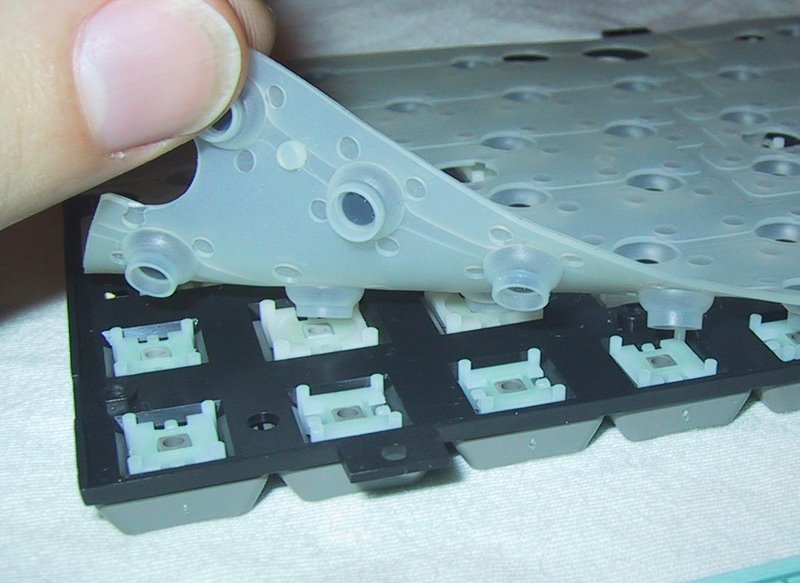Recognizing the Capability of Membrane Layer Switches Over for User Interface Tools
The functionality of membrane layer switches over stands for a substantial advancement in individual interface layout, incorporating performance with visual adaptability. As markets increasingly prioritize customer experience, comprehending the nuances of membrane layer button modern technology ends up being necessary.
What Are Membrane Buttons?
Membrane layer switches are cutting-edge interface gadgets that promote user communication with electronic devices. These functional elements include multiple layers, consisting of a visuals overlay, spacer, and a published circuit layer. The layout permits a smooth combination right into numerous electronic devices, boosting both the visual and functional elements of interface.
Membrane layer switches are commonly utilized in a variety of applications, from home home appliances to industrial machinery and medical tools. Their building normally includes a slim profile, making them a perfect option for compact styles. The tactile feedback offered by these switches can be engineered to satisfy certain user preferences, making sure reliable interaction in between the customer and the device.
Toughness is an additional substantial advantage of membrane switches, as they are immune to dirt, dampness, and chemicals, which boosts their life expectancy popular environments. In addition, these buttons can be tailored in regards to form, dimension, and visuals design, enabling for branding and user-specific functions. Generally, membrane changes stand for a practical service for improving individual experience in digital devices, combining functionality with visual appeal in a reliable way.
Exactly How Membrane Switches Over Job
Operating on a simple concept, membrane layer switches make use of a split building and construction to register user input efficiently. Each button includes several layers, consisting of a published circuit layer, a spacer layer, and a top visuals layer, which are created to interact flawlessly. When an individual presses the leading layer, it presses the spacer layer, bringing the conductive aspects of the circuit layer into call with each various other.
This call creates a shut circuit, signifying the tool to implement a specific function. The style enables different configurations, consisting of responsive comments, which can enhance the user experience by supplying a physical experience upon activation. The materials made use of in membrane buttons often consist of flexible substratums, such as polyester or polycarbonate, which make sure sturdiness and durability versus wear and tear.

Trick Advantages of Membrane Buttons

An additional considerable advantage is their density. Membrane switches are thin and lightweight, which makes it possible for makers to conserve space in their gadgets without compromising performance. This function is specifically valuable in applications where weight and volume are crucial factors to consider.
Additionally, membrane buttons are immune to dirt, dampness, and chemicals, improving their resilience. This strength expands their lifespan and reduces the demand for frequent replacements, causing expense financial savings over time.
Additionally, the tactile feedback given by membrane layer buttons can be optimized to boost customer interaction. They can include attributes such as raised buttons or distinct clicks, boosting functionality and individual experience.
Applications Throughout Industries
User user interface tools utilizing membrane layer buttons are widespread in a broad variety of sectors, showcasing their versatility and performance. Membrane Switch. In the clinical field, membrane buttons are indispensable to gadgets such as analysis equipment and person surveillance systems, where their toughness and ease of cleaning are crucial for preserving hygiene criteria. Likewise, in the automobile industry, these switches are employed in dashboard controls and infotainment systems, supplying a streamlined and modern-day user interface for users.
Additionally, the customer electronic devices market benefits from membrane buttons in appliances and portable tools, where portable style and easy to use user interfaces enhance user experience. Industrial applications additionally utilize membrane changes for useful link control panels in machinery and automation systems, stressing their effectiveness and resistance to rough environments.
In the aerospace and protection markets, membrane layer buttons are utilized in cabin controls and tools, where integrity and performance under severe conditions are critical. Furthermore, the pc gaming market progressively integrates membrane buttons in controllers and game makers, adding to an engaging user experience. Overall, the versatility of membrane changes enables their prevalent use throughout numerous industries, emphasizing their importance in contemporary interface style.
Future Trends in Membrane Switch Innovation

Additionally, using innovative materials, such as polycarbonate and polyester films, is anticipated to rise, giving enhanced toughness and resistance to ecological stressors. These products add to the overall long life of membrane layer buttons, making them ideal for harsher commercial applications.
Furthermore, the unification of clever modern technology, consisting of IoT connection, will make it possible for membrane buttons to connect with other gadgets and systems, helping with a much more interactive user experience. This pattern straightens with the growing demand for smart gadgets throughout different sectors, from medical care to customer electronic devices.
Finally, customization alternatives are expected to broaden, enabling suppliers to produce bespoke services customized to certain user needs and preferences. These advancements will certainly place membrane layer switches as vital elements in the development of interface technology.
Verdict
Finally, membrane layer changes stand for a critical advancement in interface innovation, offering a dependable and functional remedy for diverse electronic applications. Their split construction promotes small style, while functions such as responsive comments enhance user communication. The toughness against ecological variables further strengthens their energy across several markets. As developments in material science and touch sensing technologies continue, the functionality and applicability of membrane buttons are anticipated to broaden, enhancing their significance in contemporary digital description gadgets.